How can you ensure your message gets out to the local community? Gaelle Walker has some inspiring marketing ideas to help you raise your profile and your sales
With a line-up of the Olympic Games, the Queen’s Diamond Jubilee and the European Football Championships, 2012 certainly looks set to be the year that opportunity knocks for the independent stores sector.
But if you want to make the most of this special year then engagement with your local community will be vital. Those retailers who shout loudest about their unique selling points stand to benefit the most, with higher sales and footfall remaining long after the party has ended.
If you haven’t already got one, now is definitely the time to get a solid local marketing strategy in place, or whip an existing one into shape. Doing so will ensure that your message, whether it be your enviable local food range, competitive price points, charity work, or in-store tastings, is heard loud and clear.
As the following pages show, there’s a wide variety of powerful and cost-effective local marketing opportunities open to you, which - when centred around a clear and simple message - can have a positive impact on your reputation, footfall and sales.
So where to begin? It might sound obvious, but according to Capper & Co marketing manager Maia Riley, a well-honed marketing strategy should always start with your shoppers.
“Start with understanding your local customers: what is it that they expect from you what is important to them and what would make a difference. Then see how you can fit what you do to suit them,” she advises.
It’s also important to check out what your competition is doing, adds Chloe Richards, account director of local marketing company the Market Creative, whose clients include the Co-operative Group.
Doing so could not only help inspire you, but will also ensure that your plan has a point of difference.
“Involve your staff members in the planning stage, too. They know the area and see the customers on a day-to-day basis so will also have a view on what will and won’t work,” she adds.
As an independent retailer, your ability to be flexible and pull off genuinely unique and attention-grabbing ideas is a big advantage over the multiples. “Ideas that are different, which grab people’s attention, are the ones that get you noticed,” adds Richards. “Think about innovative ways to tell customers great messages, give them a reason to choose you. Create exclusive events that focus on the store these types of stories can also be used to lever coverage in the local press.”
One store in leafy Surrey is doing just that. Like many c-stores, it helps local schools with various fundraising initiatives and holds themed community events, including a Royal Wedding street party last year. But one particularly exciting initiative at Kanna Mahunda’s Budgens Store in Stoneleigh, near Epsom, is its hand-delivered welcome packs given to all community newcomers. It’s a delightfully simple idea that is winning them respect and support within the local community.
“We’ve got a great relationship with our local estate agents,” explains the store’s marketing manager Jacqueline Kear, “and whenever they complete on a deal they let us know the name and address of the people moving in. We then make them up a welcome pack with our own label tea, coffee, sugar, biscuits and cleaning products, all the things you really need when you first move into a new house. People are always so surprised when we arrive on their doorstep with a gift pack. They definitely make an excellent first impression of the community and particularly our store.”
In Holsworthy, Devon, independent retailer Dan Cock is reaping the rewards of an innovative local marketing plan which centres around his fabulous local food offer. Dan’s campaigns are spearheaded by regular in-store tastings which always command an impressive crowd.
“I hold lots of food tastings and invite shoppers to come in and have a drink and a bite to eat. These events tend to be quite well supported by both our national and local suppliers and always attract a good turnout,” he says.
News of Dan’s tastings is conveyed to shoppers via word of mouth, in-store posters, and a regular mailshot which goes out to all customers signed up to his loyalty card scheme. Information on current promotions, opening times and some all-important money-off coupons are also included in the mailshot.
“You’ve got to put the work in a couple of months in advance of each mailshot going out, though,” warns Dan. “It’s not something that can be rushed last minute. It costs me about £500 in printing and postage for about 400 mailshots, but it’s worth the investment. People respond well to money-off coupons and we always notice an increase in footfall following one.”
The local press can also be an effective route to spreading your news. “The papers are always on the lookout for positive local stories so are generally happy to run pieces on us when we hold an event or launch a new initiative,” continues Dan. “Over the years we’ve built up good relationships with our local news editors, although it is a two-way street. Village shops have always been the hub of community gossip, so sometimes we’re able to point journalists in the right direction for a story they’re working on, and in return they’re happy to publicise some of our news. I’d definitely advocate inviting members of the press to in-store events, or telling them about any exciting new initiatives or positive news you have,” he adds.
If you’d like to learn more about how to communicate meaningfully with your local press, see the panel opposite for our guide on how to write a successful press release.
And you can, of course, advertise in your local paper. It is a great way to reach a lot of people and keep control of your key messages. However, this option does require investment, and frequent bursts of advertising to ensure that your message gets out there regularly.
Another more traditional, but no less impactful, idea is to use newsletters and in-store magazines, which you can either distribute in-store or send out to your local customers via direct mail.
Budgens retailer Guy Warner is a staunch advocate of newsletters thanks to the noticeable spikes in footfall that they produce in his stores. Each spring and autumn Guy produces three different A3 glossy magazines for his large stores, which are sent out by Royal Mail to every residential address in the area. “The newsletters function as a montage of all our community activity and ultimately showcase our independent credentials,” says Guy. “They also include spotlights on some of our small producers and a column from me, which I always tailor to that particular local community,” he adds.
However there are a couple of points to be aware of, he warns. “The first thing, and it sounds a little silly, is to be 100% clear on what you want your message to be. Are you trumpeting your independence, community work or pricing? You need to be clear on this before you start the writing process, or it can get messy, not to mention expensive if you have chosen to employ a copywriter.
“Copywriters are a great way of ensuring you get a professional-looking newsletter, but with most paid by the day, you need to be clear about what you’re trying to say, or you’ll waste a lot of time and money trying to figure it out as you go along. The best tip I can give is to keep it simple.”
Photo opportunity
He says the second element to remember is pictures. “Each story needs to be illustrated so you have to think quite carefully and well in advance of how you are going to do that and ensure that the pictures that you get are in focus, the lighting is right, everyone is looking at the camera and smiling, and there are no strange or distracting backgrounds. It sounds simple, but it’s not always!”
Then there’s timing. “You need to book the slot for your mailshots well in advance of the date you want the newsletters to go out, and by that I mean at least six months! For that reason you need to be really organised. It’s certainly not something you can rush through at the last minute. It takes a lot of planning,” he adds.
For more information on planning and organising a mailshot campaign or newsletter, visit www.royalmail.com/marketing-services/new-direct-mail.
As well as the printed word, there’s also the virtual. In today’s technology-driven society, social media platforms such as Facebook and Twitter can also function as powerful local marketing tools.
“Social media is used on a national basis incredibly effectively, but it can also work at a local level in a really cost effective way,” says marketing expert Richards.
However there are a few don’ts. “Don’t bombard your customers with a multitude of different offers, and don’t ignore consumer feedback,” she says.
And while sites such as Facebook are prized for their ability to allow you to act instantly, always take the time to stop and think before you update, Richards adds. Incoherent messages and spelling mistakes will devalue your brand, she warns.
Spar Auckley retailer Amarjit Bhdaal has embraced the enormous potential of social networking by promoting his Doncaster store via Facebook, and is relishing the extra interaction with his customers.
“I’ve now got 308 ‘likes’, which is great, although not good enough as I’m competing against one of my fellow retailers to be the first to reach 500!”
He adds: “So far it’s proving to be a really effecting marketing tool, as I can tailor my messages to fit with my customer demographics. At the moment I can see that 32% of people who ‘like’ the site are aged between 13 and 17, so I’ll be sure to add some funny jokes to it to get them laughing. During the summer exam season I added links to some really good maths tutorials that I’d found. It’s also great for telling a particular group of people about a fitting promotion, although I don’t do that too often as I feel that Facebook is a better medium for communicating your social benefits as opposed to promotions.
“If you bombard people with offers they’ll get bored - that’s what leaflets are for. I also don’t believe in updating the page every day for the sake of it. It’s best to wait until you’ve got an interesting message to convey.”
Spar has recently compiled some social network guidelines to help retailers plan their communications and avoid some obvious pitfalls. For example, it says it is important to recognise that unlike one-to-one conversation your comments are often ‘out there’ in the ether and can be difficult to take back if regretted.
However, if you don’t have the time or confidence to plan and print newsletters, blogs and websites, you’ll be happy to hear that there are other quick and simple, yet really effective ways of promoting yourself locally.
Think about printing up branded bags for life, or consider loyalty programmes as another great way to get people through the doors, create a talking point and reward your loyal shoppers. And if you have it, you could also loan any extra office space you have to business groups, or the police for meetings, or just a tea stop.
With a little care and attention, any one of these local marketing ideas can prompt a dramatic improvement in the way in which your store is viewed and used by your community. You have the tools. This year, more than any other, it’s time to put them to good use. W
Source
Gaelle Walker




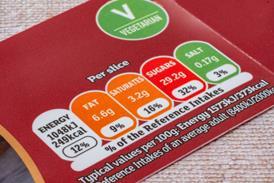
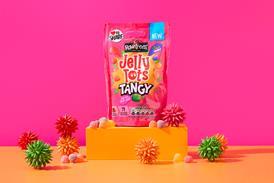













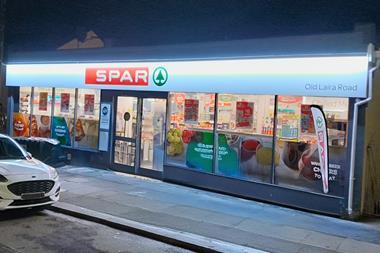


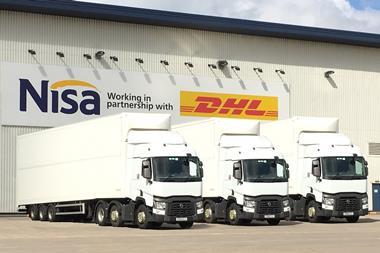

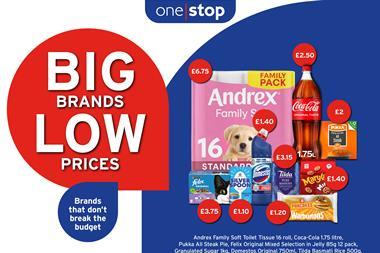
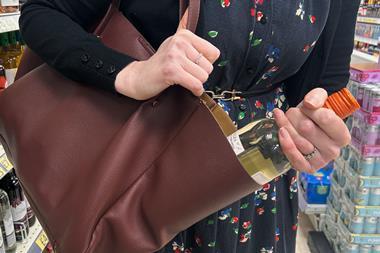

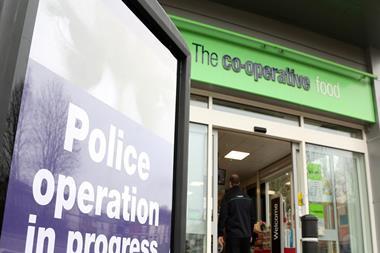
No comments yet